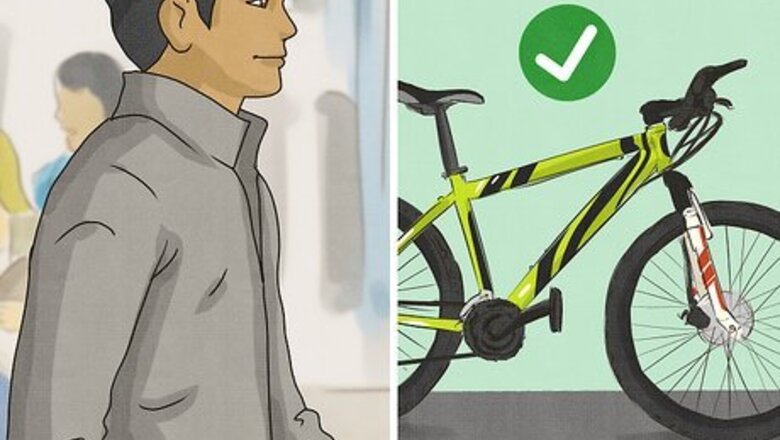
views
30 Ways to Celebrate Earth Day
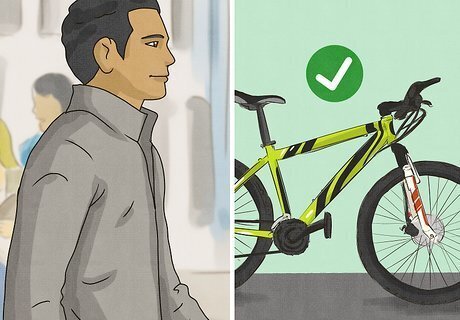
Walk or ride your bike. Going car-free for the day will reduce harmful carbon emissions. Even one day can make a difference, but if you can commit to walking or biking more often in the future, that’s even better! If your daily commute is too far for walking/biking, try these environmentally-conscious alternatives: Public transportation like buses, trains, or shuttles Carpooling with coworkers, friends, or schoolmates Consider investing in an electric or hybrid car in the future
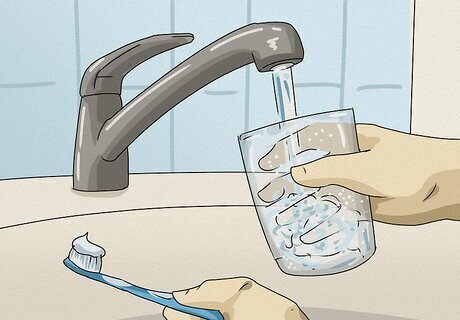
Limit your water use. Conserve water on a daily basis by turning off the faucet while you brush your teeth, checking the toilet and pipes in your home for leaks, and taking shorter showers. Other small ways to conserve water include using the dishwasher sparingly and installing a water-saving showerhead. If you have a garden, install a drip irrigation system to reduce water waste, or make sure that your watering sprinklers are on timers. Use a rain barrel to collect rainwater from your roof and gutters, then use it for non-drinking purposes like watering your garden. These seemingly small steps can have a big impact on increasing the amount of clean, drinkable water available to everyone.
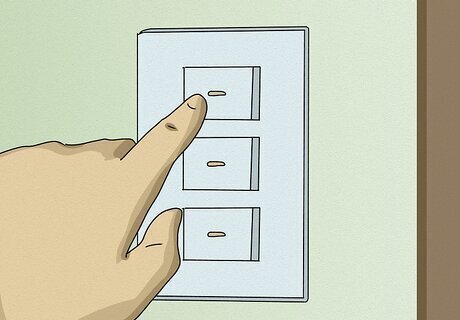
Turn off lights when you’re not using them. Turn off lamps and overhead lights whenever you leave a room or your house. If you’re sitting in a room with the sun shining through a window next to you, consider whether you really need an electric light on. Electricity often comes from fossil fuels that contribute to climate change, so using as little electricity as possible is a great way to help the Earth.
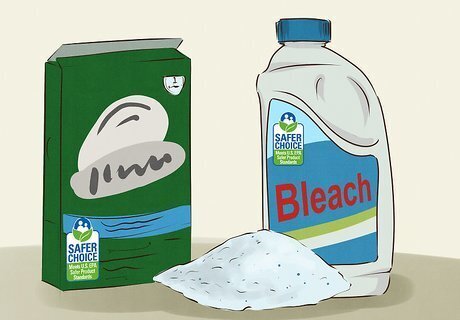
Switch to non-toxic cleaning products. The government's Safer Choice program makes it easy for you to identify which cleaning products are environmentally-friendly and low in toxicity. Just look for the Safer Choice logo, which will be on the cleaning product’s label. You can also make simple homemade cleaning products. For example, a solution made of equal parts water and white vinegar effectively cleans floors, bathrooms, cabinets, and counters. Look for manufacturers that have achieved Carbonfree® Product Certification. This certification means that the product's carbon footprint has been measured and neutralized.

Unsubscribe from paper catalogs. Filter through your junk mail and contact companies that are sending you needless paper catalogs. Ask them to take you off of their mailing list or opt for digital newsletters. Or, go to CatalogChoice.org and sign up for their services, which will help you get your name off of mailing lists in one fell swoop. Paper goods, like catalogs, contribute massively to global deforestation. It’s one thing to purchase paper books and items that you’ll read and use, but there’s no point in wasting paper for something you’re immediately going to chuck in the trash.

Switch to paperless billing. If you’re still receiving paper bills in the mail, sign into your account or call the company and tell them you want to switch to paperless billing. These days, most (if not all) credit card and utility companies provide a paperless billing option for their customers who want to save trees and prevent waste.
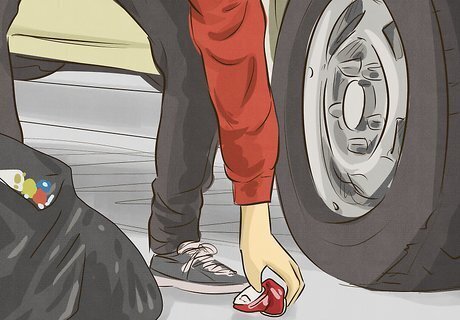
Pick up litter in your community. You can do this as an individual or join a community group. Many local environmental groups organize bigger events where you can join a team and clear roadways, highways, and neighborhood streets of litter, so see if your local community is hosting anything. Taking a moment to pick up any litter you see as you’re out and about on Earth Day is helpful and easy to do.

Recycle glass containers into beach sand. Some environmental organizations turn recycled glass into a sand alternative to help combat coastline erosion. One of the major companies doing this work is called Glass Half Full—reach out to them to find out how you can help or do some research into any similar companies operating in your area.

Carry reusable plastic or cloth bags. Use reusable grocery bags when you go to the supermarket or when you’re buying items at any store. If you don’t have any bags, purchase some reusable cloth totes and use those going forward. Did you know that most plastic bags are used for about 10-20 minutes, only to end up in a landfill for hundreds of years? Since humans use 4 trillion plastic bags a year, this is a big problem—especially since plastic bags can’t be recycled at facilities. Saving and reusing plastic bags is an easy solution you can incorporate today.
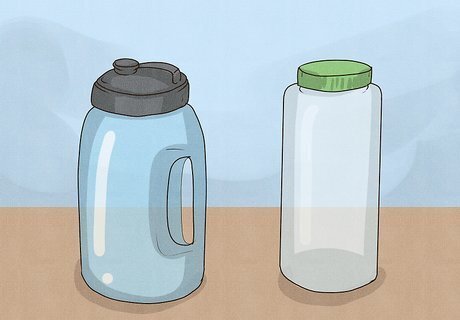
Use a refillable water bottle. Consider going with a stainless-steel refillable bottle for a super durable option. Disposable plastic water bottles end up in landfills after a single use. Using a refillable water bottle protects the planet, saves you money, and protects your health (since plastic contains a harmful chemical called BPA).

Build a compost bin in your garden. Instead of putting your banana peels, egg shells, carrot tops, and avocado skins in the trash (where they'll end up in a landfill), start composting instead! Collect your food scraps (except for meat and dairy products) in a closed compost bin and add leaves, sticks, grass clippings, and other organic yard trash to the mix. Remember to turn the compost mixture every few days using a pitchfork. After several months of turning, the compost will break down into a rich, brown soil for your garden.
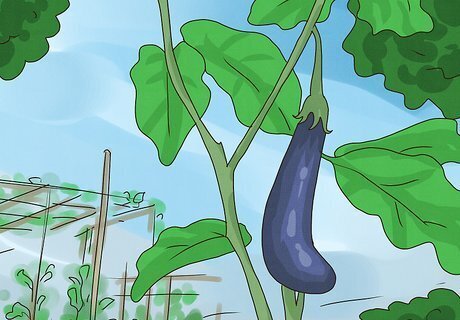
Plant a veggie garden in your backyard. Earth Day falls during the perfect time of year to plant a vegetable garden—springtime! Many types of vegetables can be grown in relatively small spaces, so pick a few options that grow well in your climate. Try your hand at growing tomatoes. For something low-maintenance, grow green beans. You can grow herbs in pots with minimal tending. Don't have space for a garden? See if there's a community garden in your area where you can volunteer.
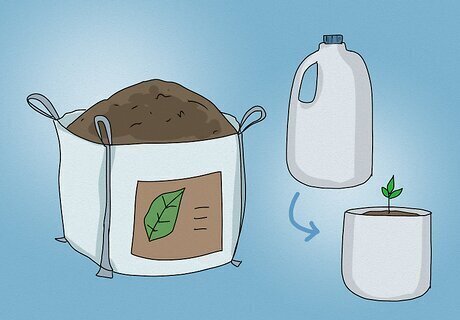
Implement recycling practices in your garden. Having a garden, in general, is a great step toward being more environmentally friendly. However, it’s still important that you reduce, reuse, and recycle materials as much as possible while gardening. Here are some ideas to be less wasteful in your gardener lifestyle: Buy materials like topsoil, mulch, and compost in bulk to reduce the amount of plastic packaging you’re consuming. Check with your city recycling center or Department of Transportation to see if they offer free compost, sand, soil, or wood chips. Reuse pots and containers from food products to use in the garden rather than buying new plastic ones from the garden center. Use biodegradable pots to plant pots right into the ground.
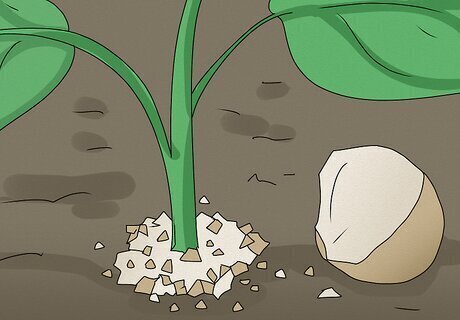
Use chemical-free gardening practices. Look for organic soil that is chemical- and pesticide-free. Use natural remedies, rather than pesticides, to control pests, like adding crushed eggshells on top of your soil. Make a DIY organic fertilizer by brewing herb and weed combos like comfrey, stinging nettle, and horsetail, for example.

Create a wildlife habitat in your backyard. Dedicate a section of your yard to growing native plants and providing resources for your local wildlife. Install a birdbath or small pond to attract wildlife to your yard. Leave sections of your yard unmowed to attract bees and butterflies, and install feeders for bats, squirrels, hummingbirds, or other local critters. Increased urban development leads to habitat loss for many animals, plants, and insects. Starting your own wildlife habitat helps to support biodiversity in your local environment.
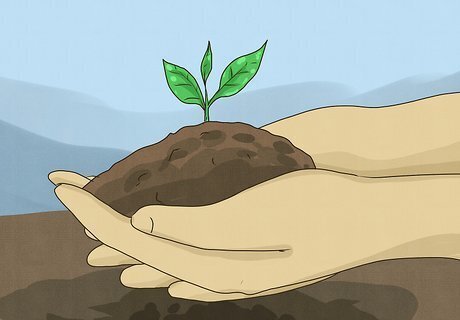
Plant a tree. Pick a tree species that’s native to where you live. If you're unsure, ask an employee at your local nursery or garden department. Choose the best planting spot to meet the tree’s needs, dig a properly sized hole, and water the tree well to give it a good start. If physically planting a tree is unrealistic for you, there are other options! Try donating to a reputable environmental non-profit that will plant trees on your behalf instead. Earth Day roughly coincides with U.S. Arbor Day, so see if your community is holding a tree-planting event and join up. Planting a tree only takes a few minutes, but it can make a huge impact. Trees are crucial because they help to save energy, clean pollution, prevent erosion, and provide homes for many birds, insects, and other local wildlife.
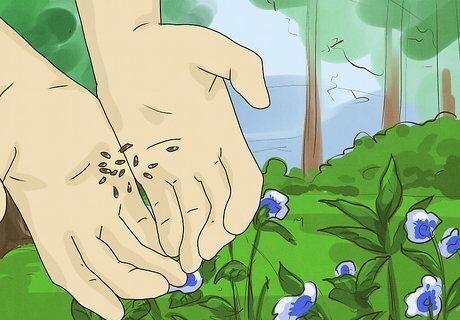
Scatter wildflower seeds in your yard or neighborhood. Choose flowers that are native to your area. Scatter or plant seeds in your garden, backyard, or along nature strips and roadways. Wildflowers are extra easy to grow—many wildflower seeds can be scattered freely since they’ll take root on their own and require no tending. Be sure to check the seed packet for instructions, though! Restoring local plant life will help attract native bird life, pollinators, and local mammals. To attract Monarch butterflies, plant milkweed and brightly colored wildflowers. Bees are attracted to white, yellow, blue, and purple blooms. To attract hummingbirds, plant foxglove, honeysuckle, or lilies.

Support native bees and other pollinators. If you have a garden, grow pollinator-friendly plants that attract butterflies (e.g., coneflowers, goldenrod), hummingbirds (e.g., columbine, petunia), and bees (e.g., daisies, honeysuckle). Research native bees and other ways to support them, such as making a native bee house and attracting bees to it. There are many different styles of bee hotel, but you can make a simple house by drilling 12-18 holes into a 4 by 4 inches (10 cm × 10 cm) block of wood and mounting it on a post. Place the house at least 3 feet (0.91 m) off the ground and make sure it has a roof to keep it protected from weather elements. Drill holes of various sizes to attract different bees, then remove splinters from the holes with a piece of sandpaper. Use only untreated, unpainted wood for your native bee house.

Go on a nature walk through a local park. Spending time in nature is a fun and easy way to celebrate Earth Day! Pick something that makes sense for your schedule and lifestyle—but bring along a guide to your local plants and wildlife so you can learn more about your area’s native flora and fauna along the way. Here are a few ideas to get you started: Hike the nature trails at your local park. Go bird-watching. Visit a nearby botanical garden. Plan a beach day with your friends or family. Explore the dunes and tide pools at your nearest beach.
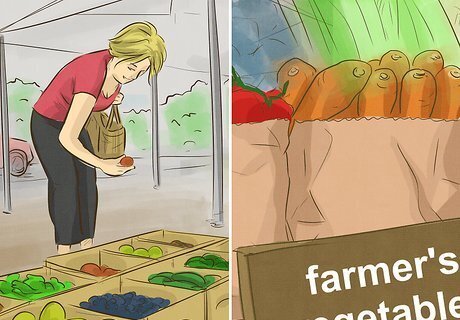
Visit a local farmer's market. Eating locally grown food is much better for the environment. For example, locally-grown food doesn't have to be transported long distances to end up on grocery store shelves. You’ll also be giving back to your community by supporting local farmers. Some grocery stores have a section devoted to locally-grown foods.

Eat more vegetables (that are in season). Buy seasonal food from local farms and markets rather than food that’s been genetically modified to be available out of season. Try eating vegetarian for 3-4 days of the week to reduce your carbon footprint—or drop meat completely and go vegetarian! If you’re a major carnivore, start with Meatless Mondays and work your way up from there.
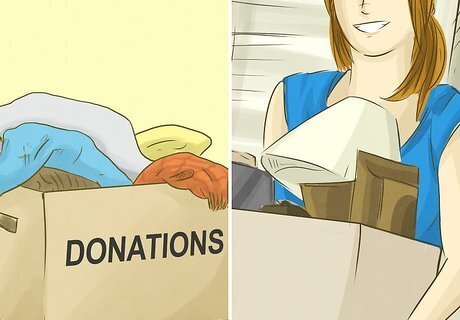
Sell or donate used items. If you have clothing, appliances, and other items that are still in good shape, consider hosting a garage sale, donating to people in need, or finding unique ways to upcycle and reuse the items. Instead of tossing out an old T-shirt, use a sewing machine to turn it into a reusable shopping bag. Make upcycled planters with colanders, old tires, or milk jugs. Landfills are already overflowing, so try to avoid adding to that situation.
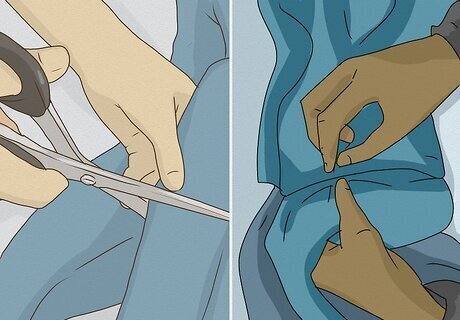
Host a clothing repair party. Buy needles, patches, and thread in bulk from a local craft store and learn some basic sewing stitches. Invite some friends, colleagues, or strangers to your home or a local gathering space. Ask all of your invitees to bring any items of clothing that have wear-and-tear, and work together to patch up any holes and rips and give the clothing a new life! Alternatively, you can skip the sewing and use cute iron-on patches to add new flair to old clothes—and extend their wearability in the meantime! You could also host a clothing swap—start by asking people to bring their old and unworn clothes to your event. Then, everyone can sustainably get rid of their items and look for new ones among what other people have brought!

Shop for used and thrifted clothing. Sometimes you do just need to buy new clothes, but it’s best to check second-hand stores first to see if they have what you need. Try thrift stores in your area or major consignment chains like Goodwill. You can also search online used clothing sites for a bigger selection, like thredUP or Poshmark.

Host an environmentally-friendly craft night. Search through Pinterest or TikTok for upcycled crafts and DIY decor. Invite over a group of friends and ask them to bring over any reusable items or junky objects that they have sitting around unused. Use your mutual creativity (as well as inspo pics from the internet) to create something new out of these old objects! Alternatively, you could choose a specific eco-friendly craft idea ahead of time, like making recycled paper, and gather the supplies for your craft night while buying as few new materials as possible.
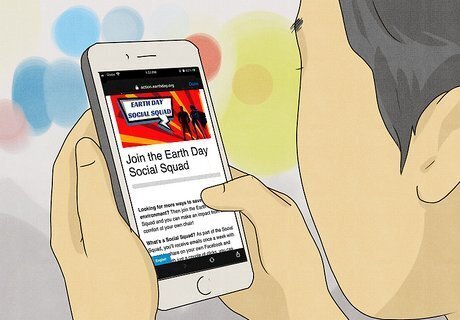
Share an Earth Day message on social media. Post something educational, like a video about climate change or rainforest preservation. If you'd rather do something more interactive, use the hashtag #EarthDayChallenge and encourage your followers to commit to one simple act, like picking up 15 pieces of litter, as a way to celebrate Earth Day. For an easy way to raise awareness (on Earth Day and beyond), sign up for EarthDay.org’s Social Squad to receive a weekly social media post to share. For more information, visit https://action.earthday.org/social_squad_signup. Jane Goodall Jane Goodall, Conservation & Animal Welfare Advocate Take action in your own life to protect the environment. "You cannot get through a single day without having an impact on the world around you. What you do makes a difference, and you have to decide what kind of difference you want to make."
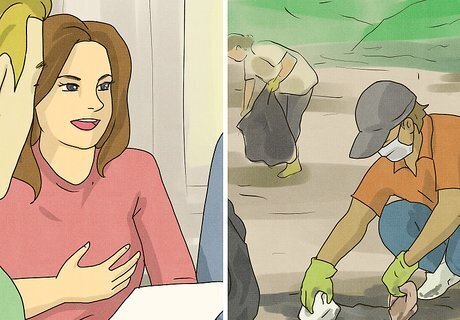
Attend a local Earth Day event. See if your community is holding an environmental fair. If your community doesn't have one planned, consider starting one yourself! It's the perfect day to get together for a fun and educational celebration of the Earth. Any money raised can go towards a local environmental restoration project or group. Here are some ideas to get you started: Demonstrations of environmentally-friendly products Stalls for recycling appliances and books Local organizations presenting educational information Local farmers setting up booths to sell fresh produce
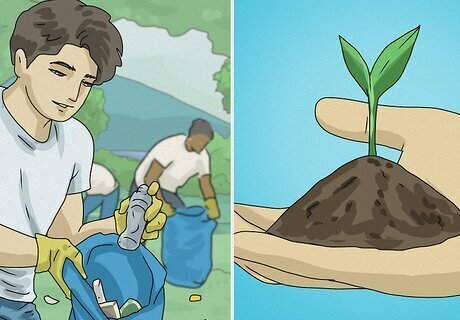
Join a volunteer activity to help your local environment. Look on neighborhood or community message boards for Earth Day volunteer opportunities. Or, organize your own! Try one of these volunteer ideas for Earth Day: Start a collection drive for recyclable items and take items to a local recycling center. Host an outdoor screening of a climate documentary to educate more people in your community. Organize a fundraising event like a bird-a-thon, where bird expert volunteers collect pledges for the number of birds they can identify on Earth Day weekend.
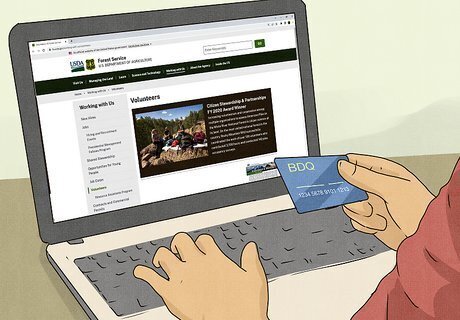
Join an environmental organization. Whether you live near an ocean, river, forest, mountain, swamp, or lake, wild areas like these need protection. They are home to many plants and animals who rely on them for food and shelter. You can do things like: Join a group working to protect local wildlife from pollution Volunteer with the National Park Service: https://www.nps.gov/getinvolved/volunteer.htm Volunteer with the U.S. Department of Agriculture's Forest Service: https://www.fs.usda.gov/working-with-us/volunteers
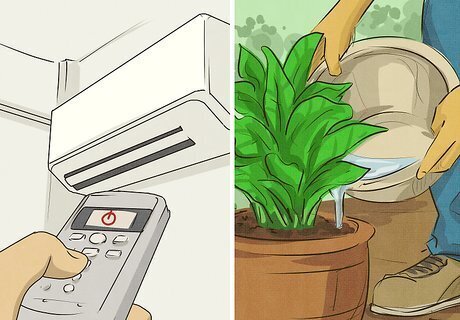
Commit to one green act per day. Moving forward, make it your goal to do one small thing every day to support the environment. While small changes at the individual level may not seem like a big deal, they add up over time and can have a major impact. Earth Day can be every day! Try these easy, environmentally-savvy ideas to get started: Turn off your AC when you’re out. Switch to energy-efficient LED bulbs. Consider purchasing a carbon offset for your home, vehicle, or air-travel. Donate to an environmental non-profit.
Earth Day Activities & Crafts for Kids
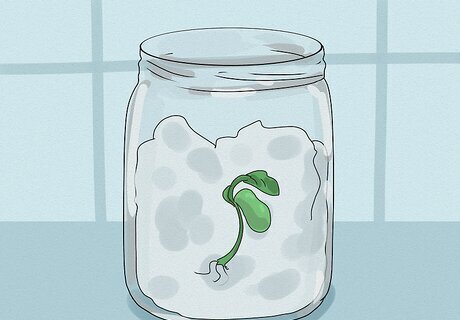
Grow a bean plant from your kitchen. Stuff a handful of cotton wool into a glass jar. Place a broad bean seed into the glass jar. Nestle the seed against the side of the jar so it’s visible from the outside. Sprinkle 1-2 spoonfuls of water into the glass and let the bean sit. Have your child check the bean seed every day until the bean begins to sprout! They should see root growth start to appear, followed by the plant beginning to grow out of the other side of the bean. Make sure to keep the cotton moist, especially if you live in a dry area or are keeping your jar in a very sunny spot. For older kids, try placing two beans on opposite sides of the jar and give one more light than the other. Help your kids observe the effect that light has on plant growth!
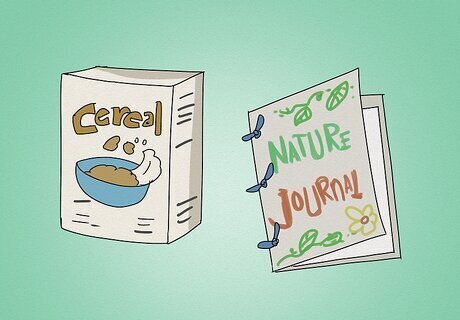
Create nature journals. Open a large cereal box at the top and bottom and fold it flat. Cut off the front and back sections of the cereal box so that you have two 9 by 12 inches (23 cm × 30 cm) rectangles. Add paper between the front and back covers of the cereal box. Use blank sheets of paper or a premade field guide template like this one. Punch three holes along the long edge of the cereal box covers, making sure to punch all the way through the pages inside. Cut three pieces of yarn or ribbon about 5 inches (13 cm) long. Tie each piece through the holes to fasten the cereal box covers to the papers inside. Give your child stickers, crayons, and other craft supplies to decorate the cover of their nature journal. You can also help them cut out pictures of animals and plants from old magazines or newspapers. Take your child outside to explore your neighborhood or local park. Help them record their observations about the sounds and sights of the natural world.
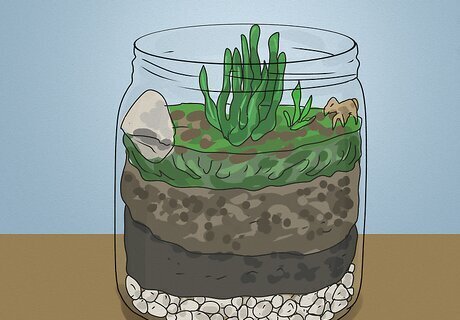
Plant a terrarium. Start making your terrarium by lining the bottom of a large jar with a layer of small rocks. Top the rock layer with 1–3 inches (2.5–7.6 cm) of potting soil. Add just enough water to dampen the soil without making it soggy. Decorate the terrarium with small toys, shells, or moss. Place the lid on the jar and set it in a spot that receives indirect sunlight. Encourage your child to observe the terrarium each day and note its changes. What things help the plants grow (water, light, soil)? How does the water move through the jar? Most gardening and hardware stores have at-home terrarium kits that come with everything you need.
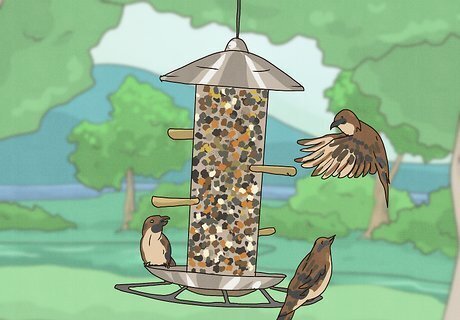
Build a bird feeder out of recycled milk jugs. Start building your milk jug bird feeder by washing out a plastic gallon container with soapy water. Use scissors to cut large “windows” into your milk jug. Leave at least 2–3 inches (5.1–7.6 cm) of space between the bottom of the window and the bottom of the jug. Use a pair of scissors to create two hole punctures on the top of the jug. String a piece of strong twine through the two holes and tie a strong knot. Cut slits on either side of each of your windows. Insert either end of a stick into the slits to create a resting perch for birds. Secure the perch with hot glue or tape, if necessary. Decorate the birdhouse with stickers, permanent markers, paint, or any other decorative pieces that you’d like! If you don’t have plastic milk jugs lying around, make a recycled bird feeder out of other repurposed materials like soda bottles, egg cartons, or orange peels.

Visit a national park from home. Visit the national parks page on the Google Arts & Culture site. Scroll down the page to find a large list of national parks that you can explore in 360º from your laptop or tablet. Click on one that interests your child, and explore the park together. Discuss what you see, observe, and what each of you finds interesting about this park. To further your child’s learning, look for books that have more information about the national park you explored. If you visited Yellowstone National Park, for example, read books like Dorothy Hinshaw Patent’s When the Wolves Returned or Lita Judge’s Yellowstone Moran: Painting the American West.
What is Earth Day?
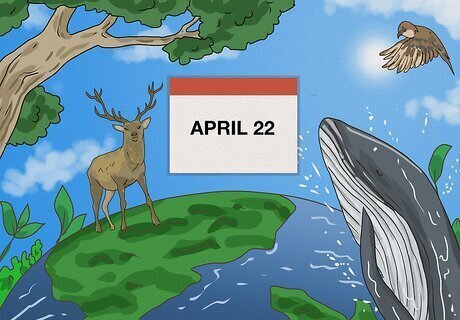
Earth Day is celebrated annually on April 22nd to highlight environmental issues. Celebrating Earth Day each year is a reminder of how important the Earth is and all we must do (every day) to protect it. Some people celebrate Earth Day by taking intentional action to help the environment, while others use it as a reason to spend time enjoying the beauty of the natural world. The history of Earth Day as we know it began with the book Silent Spring by Rachel Caron, which highlighted the environmental damage done by harmful chemicals. This book inspired Junior Senator Gaylord Nelson of Wisconsin to create Earth Day, which quickly became a major annual event, largely thanks to Denis Hayes, the founder of the international Earth Day network. On the first Earth Day in 1970, approximately 20 million people gathered across the U.S. to host events campaigning for more environmental laws and policies. Since then, many important environmental policies have been implemented, such as the Clean Air Act, the Water Quality Improvement Act, and the Endangered Species Act.












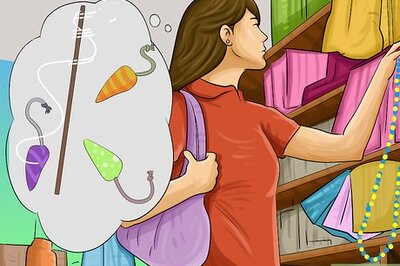






Comments
0 comment